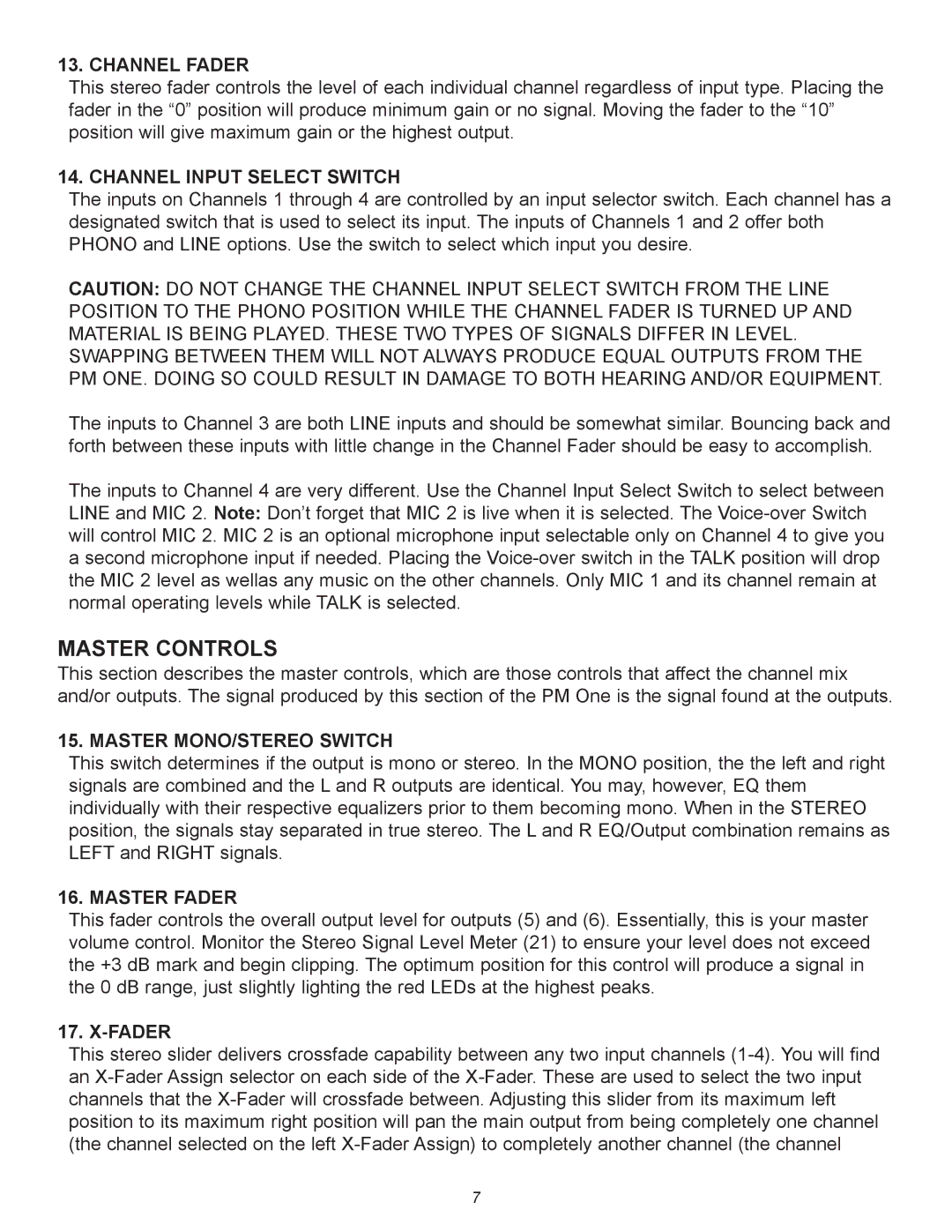13. CHANNEL FADER
This stereo fader controls the level of each individual channel regardless of input type. Placing the fader in the Ò0Ó position will produce minimum gain or no signal. Moving the fader to the Ò10Ó position will give maximum gain or the highest output.
14. CHANNEL INPUT SELECT SWITCH
The inputs on Channels 1 through 4 are controlled by an input selector switch. Each channel has a designated switch that is used to select its input. The inputs of Channels 1 and 2 offer both PHONO and LINE options. Use the switch to select which input you desire.
CAUTION: DO NOT CHANGE THE CHANNEL INPUT SELECT SWITCH FROM THE LINE POSITION TO THE PHONO POSITION WHILE THE CHANNEL FADER IS TURNED UP AND MATERIAL IS BEING PLAYED. THESE TWO TYPES OF SIGNALS DIFFER IN LEVEL. SWAPPING BETWEEN THEM WILL NOT ALWAYS PRODUCE EQUAL OUTPUTS FROM THE PM ONE. DOING SO COULD RESULT IN DAMAGE TO BOTH HEARING AND/OR EQUIPMENT.
The inputs to Channel 3 are both LINE inputs and should be somewhat similar. Bouncing back and forth between these inputs with little change in the Channel Fader should be easy to accomplish.
The inputs to Channel 4 are very different. Use the Channel Input Select Switch to select between LINE and MIC 2. Note: DonÕt forget that MIC 2 is live when it is selected. The
MASTER CONTROLS
This section describes the master controls, which are those controls that affect the channel mix and/or outputs. The signal produced by this section of the PM One is the signal found at the outputs.
15. MASTER MONO/STEREO SWITCH
This switch determines if the output is mono or stereo. In the MONO position, the the left and right signals are combined and the L and R outputs are identical. You may, however, EQ them individually with their respective equalizers prior to them becoming mono. When in the STEREO position, the signals stay separated in true stereo. The L and R EQ/Output combination remains as LEFT and RIGHT signals.
16. MASTER FADER
This fader controls the overall output level for outputs (5) and (6). Essentially, this is your master volume control. Monitor the Stereo Signal Level Meter (21) to ensure your level does not exceed the +3 dB mark and begin clipping. The optimum position for this control will produce a signal in the 0 dB range, just slightly lighting the red LEDs at the highest peaks.
17. X-FADER
This stereo slider delivers crossfade capability between any two input channels
7
